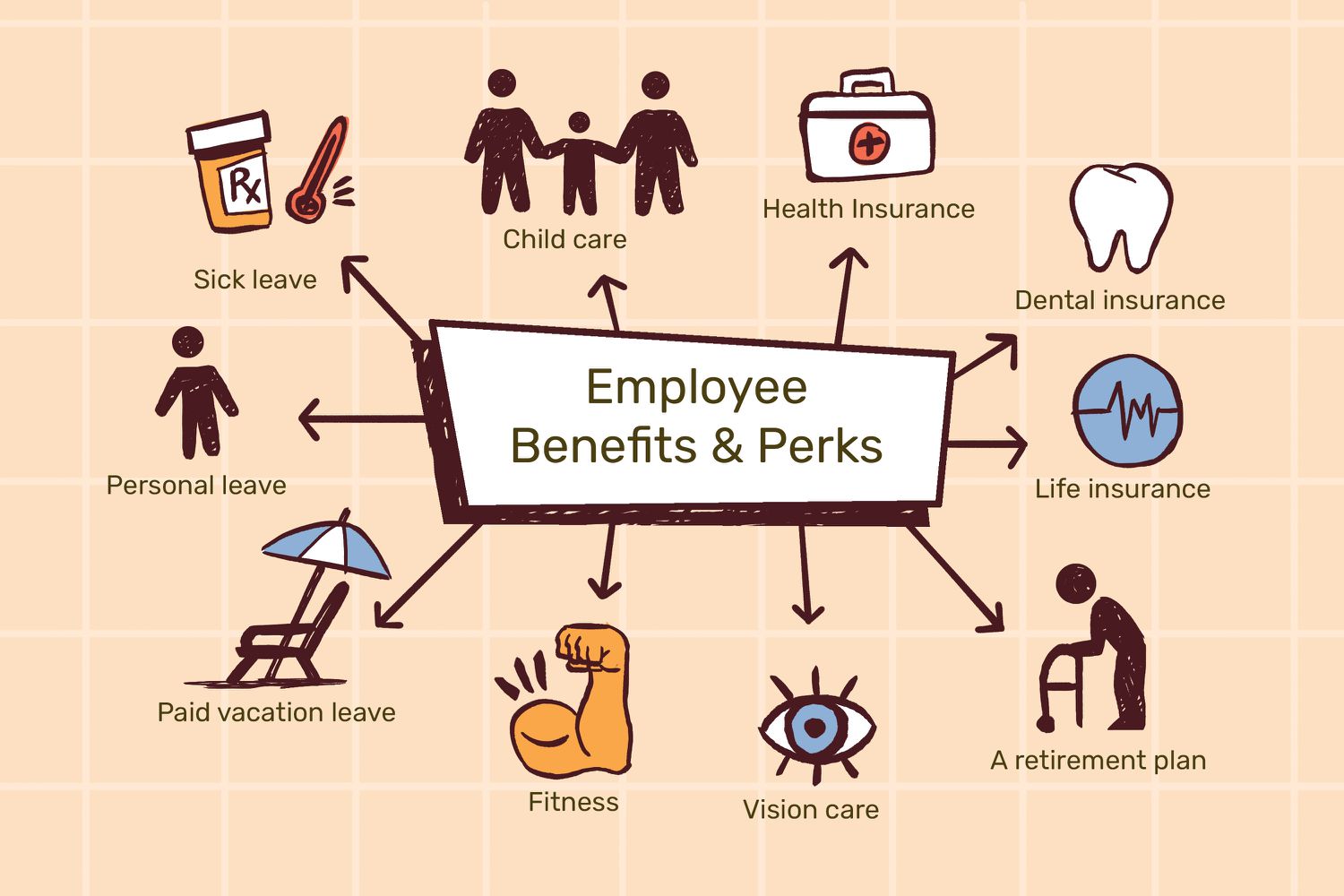

Finance
How To Add Health Insurance That Covers Mexico
Published: October 30, 2023
Looking for finance options to add health insurance covering Mexico? Find out how to secure your health with our comprehensive coverage plans.
(Many of the links in this article redirect to a specific reviewed product. Your purchase of these products through affiliate links helps to generate commission for LiveWell, at no extra cost. Learn more)
Table of Contents
- Introduction
- Understanding the Need for Health Insurance in Mexico
- Types of Health Insurance Coverage in Mexico
- Researching Health Insurance Options in Mexico
- Evaluating and Comparing Health Insurance Plans
- Steps to Add Health Insurance That Covers Mexico
- Applying for Health Insurance in Mexico
- Understanding the Cost and Premiums of Health Insurance
- Managing and Utilizing Health Insurance in Mexico
- Tips for Maximizing Health Insurance Benefits in Mexico
- Conclusion
Introduction
When it comes to traveling or living in Mexico, ensuring you have proper health insurance coverage is essential. Accidents and unexpected illnesses can happen anywhere, and having the right insurance can offer peace of mind and financial protection. Whether you are a short-term traveler, an expatriate, or a retiree, adding health insurance that covers Mexico to your existing coverage is a smart move.
Mexico is a beautiful country with a rich culture, warm climate, and delicious cuisine. However, navigating the healthcare system can be challenging for foreigners. Understanding the need for health insurance in Mexico is the first step to safeguarding your well-being while you are there.
Without health insurance, medical expenses in Mexico can be exorbitant, particularly for emergency services or specialized treatments. Local healthcare facilities may also require upfront payment before providing services, which can cause significant financial strain in unforeseen circumstances.
Fortunately, there are various types of health insurance coverage options available in Mexico, catering to different needs and budgets. From comprehensive plans that cover a wide range of services to more affordable options that provide basic coverage, there is a solution for everyone.
Researching and evaluating the health insurance plans that cover Mexico is crucial in order to choose the one that best suits your requirements. Comparing the coverage, cost, benefit limits, and the inclusion of pre-existing conditions is essential before making a decision.
Once you have selected a suitable health insurance plan, the next step is to apply for it. The application process is typically straightforward, and most insurers have online applications or can be contacted directly for assistance. Understanding the costs and premiums associated with the insurance plan is also important to manage your budget efficiently.
Once you have acquired health insurance that covers Mexico, it is crucial to familiarize yourself with how to manage and utilize the coverage effectively. Knowing the network of preferred providers, the claim process, and the necessary documentation can streamline your experience and ensure you receive the proper care.
In this article, we will guide you through the process of adding health insurance that covers Mexico to your existing coverage. We will discuss the types of coverage available, the steps to acquire insurance, and tips for maximizing your benefits. By the end, you will have a comprehensive understanding of how to protect your health and finances while in Mexico.
Understanding the Need for Health Insurance in Mexico
Mexico is a popular destination for travelers, expatriates, and retirees due to its vibrant culture, breathtaking landscapes, and affordable cost of living. However, when it comes to healthcare, it is crucial to understand the need for health insurance in Mexico.
The Mexican healthcare system operates on a different structure compared to many other countries. While the government provides universal healthcare through the Instituto Mexicano del Seguro Social (IMSS) and the Instituto de Seguridad y Servicios Sociales de los Trabajadores del Estado (ISSSTE), these services may not be accessible to foreigners.
For short-term visitors to Mexico, it may be necessary to rely on private healthcare facilities. In such cases, having health insurance can significantly ease the financial burden of unexpected medical expenses, as well as provide access to quality care.
For expatriates and retirees who plan to reside in Mexico for an extended period, health insurance becomes even more imperative. The coverage provided by the IMSS or ISSSTE may have limitations, and private healthcare may offer more comprehensive services and shorter waiting times.
In addition to the potential limitations of government-funded healthcare, it’s important to consider that medical costs can be high in Mexico. Even minor medical treatments and consultations can add up quickly, and more significant medical emergencies or specialized care can result in substantial expenses.
Moreover, the language barrier and differences in healthcare practices can make navigating the system challenging for foreigners. Having health insurance in Mexico means you have access to a network of preferred providers who understand the needs of international patients and can provide care in English or other languages.
By having health insurance coverage, you can ensure timely and appropriate medical attention without the stress of financial implications. The insurance can cover hospital stays, surgeries, consultations, medications, and other medical treatments, depending on the chosen plan.
Ultimately, health insurance mitigates the financial risks associated with healthcare in Mexico and offers a safety net for emergencies. It allows you to focus on enjoying your time in Mexico, knowing that you have reliable access to quality medical care, regardless of the unexpected.
In the next section, we will explore the various types of health insurance coverage available in Mexico, helping you make an informed decision on the best option for your needs.
Types of Health Insurance Coverage in Mexico
When it comes to health insurance coverage in Mexico, there are several options available to cater to different needs and budgets. Understanding the types of coverage will help you make an informed decision on the best insurance plan for your specific requirements.
1. International Health Insurance: This type of coverage is designed for expatriates and long-term residents in Mexico. International health insurance provides comprehensive coverage that extends beyond the borders of Mexico, allowing you to access medical services internationally. These plans often include benefits such as emergency evacuation, repatriation, and coverage for pre-existing conditions. They offer flexibility, allowing you to choose hospitals and doctors, and some policies may offer cashless services.
2. Local Private Health Insurance: Local private health insurance plans are specifically designed for individuals residing in Mexico. These plans offer coverage within the country and sometimes have limitations on international benefits. They provide comprehensive coverage for a wide range of medical treatments, including hospital stays, surgeries, consultations, and medications. Some plans also offer dental and vision coverage as additional options.
3. Travel Health Insurance: Travel health insurance is suitable for short-term travelers or tourists visiting Mexico. These plans provide coverage for the duration of your trip and offer emergency medical services, including hospitalization, medical evacuation, and repatriation. It is important to note that travel health insurance typically does not cover pre-existing conditions or non-emergency medical treatments.
4. Mexican Social Security Coverage: The Mexican government provides healthcare coverage through the Instituto Mexicano del Seguro Social (IMSS) and the Instituto de Seguridad y Servicios Sociales de los Trabajadores del Estado (ISSSTE). These programs are primarily intended for Mexican citizens and legal residents who contribute to the social security system. While these programs may be accessible to foreigners under certain circumstances, it is crucial to understand the limitations and eligibility criteria.
It is important to carefully evaluate the details of each type of coverage to determine which one best meets your needs. Consider factors such as the coverage limits, benefit inclusions, exclusions, provider networks, and affordability. Additionally, check if the insurance plan covers pre-existing conditions or if there are waiting periods before certain treatments can be claimed.
By understanding the types of health insurance coverage available in Mexico, you can choose the plan that provides the necessary protection and peace of mind during your time in the country. In the next section, we will discuss how to research and compare health insurance options to find the best fit for your needs.
Researching Health Insurance Options in Mexico
When it comes to researching health insurance options in Mexico, it’s important to take a thorough and diligent approach. This will ensure that you find the best insurance plan that meets your specific needs and provides optimal coverage. Here are some key steps to follow when researching health insurance options in Mexico:
1. Gather Information: Start by gathering information about the different insurance providers operating in Mexico. Look for reputable companies that have experience in offering international health insurance plans or have a strong presence in the Mexican market.
2. Define Your Needs: Before starting your research, identify your specific needs and requirements. Consider factors such as your age, health condition, budget, and the length of your stay in Mexico. This will help you narrow down your options and find plans that are tailored to your individual situation.
3. Online Research: Utilize online resources to explore various health insurance providers and their offerings. Visit their websites, read about their plans, coverage details, and any specific terms or conditions. Look for customer reviews and ratings to get an idea of their reputation and customer satisfaction levels.
4. Seek Professional Advice: Consider seeking advice from insurance brokers or consultants who specialize in health insurance for Mexico. They can provide expert guidance and help you navigate the complex insurance landscape. They will have in-depth knowledge of different plans, coverage options, and pricing.
5. Compare Plan Features: Compare the features and benefits of different health insurance plans. Look for coverage details, included treatments and services, network of doctors and hospitals, coverage limits, deductibles, and copayments. Assess whether the plan covers pre-existing conditions and check if there are waiting periods before certain treatments can be claimed.
6. Consider Premiums and Costs: Evaluate the premiums and costs associated with each insurance plan. Calculate the monthly or annual premiums and assess whether they fit within your budget. Take note of any additional costs such as deductibles, copayments, coinsurance, or out-of-pocket expenses that you may need to bear.
7. Check Provider Networks: Make sure to review the network of doctors, hospitals, and clinics associated with the insurance plan. Check if your preferred healthcare providers are included in the network and consider the accessibility and reputation of the network facilities in the areas you plan to visit or reside in. Ensure that there are enough options near your location to receive quality care.
8. Read the Fine Print: Carefully read and understand the terms and conditions, policy exclusions, and any limitations imposed by the insurance provider. Pay attention to clauses related to pre-existing conditions, emergency medical services, claim procedures, and cancellation policies.
By following these steps and conducting thorough research, you can gather valuable information to make an informed decision. Remember to take your time, compare multiple options, and choose the health insurance plan that offers the best coverage and value for your specific needs.
Evaluating and Comparing Health Insurance Plans
When it comes to health insurance in Mexico, evaluating and comparing different plans is crucial to ensure you choose the one that best meets your needs. Here are some key factors to consider when evaluating and comparing health insurance plans:
1. Coverage and Benefits: Review the coverage and benefits offered by each insurance plan. Look for comprehensive coverage that includes hospitalization, surgeries, consultations, medications, emergency care, and specialized treatments. Consider any specific needs you may have, such as coverage for pre-existing conditions or maternity care, and ensure that the plan adequately addresses those needs.
2. Network of Providers: Assess the network of doctors, hospitals, and clinics associated with each plan. Check if your preferred healthcare providers are included in the network and consider the accessibility and reputation of the network facilities in the areas you plan to visit or reside in. Having a wide network ensures you have multiple options for receiving quality healthcare.
3. Cost and Premiums: Evaluate the cost and premiums associated with each insurance plan. Consider the monthly or annual premium payments and assess if they fit within your budget. Take note of any additional costs such as deductibles, copayments, coinsurance, or out-of-pocket expenses that you may need to bear. Strive to find a balance between affordability and the level of coverage provided.
4. Deductibles and Copayments: Pay attention to the deductibles and copayments required by each plan. Deductibles are the amount you must pay before the insurance coverage kicks in, while copayments are the fixed amounts you must pay for each medical service. Evaluate the impact of these costs on your overall healthcare expenses and choose a plan that offers reasonable deductibles and copayments.
5. Exclusions and Limitations: Read the fine print and carefully review the exclusions and limitations of each insurance plan. Look for any specific treatments or conditions that are excluded from coverage. Assess the waiting periods for certain services or treatments, as it may affect your ability to receive immediate care for specific conditions.
6. Customer Service and Claims Process: Consider the customer service reputation of each insurance provider and their claims process. Research customer reviews and ratings to gauge the insurer’s responsiveness and efficiency in handling claims. A seamless claims process and excellent customer service can significantly enhance your experience with the insurance plan.
7. Additional Services and Benefits: Some health insurance plans may offer additional services and benefits, such as telemedicine consultations, wellness programs, preventive care services, or discounts on prescription medications. Assess these value-added services and consider how they align with your healthcare needs and preferences.
8. Financial Stability and Reputation: Explore the financial stability and reputation of the insurance provider. Look for indicators such as the company’s financial ratings and years of experience in the industry. A reputable and financially stable insurer is more likely to provide reliable coverage and timely reimbursement.
By evaluating and comparing health insurance plans based on these factors, you can make an informed decision and select the plan that offers the best combination of coverage, affordability, and value. Remember to thoroughly review the terms and conditions of the chosen plan before making a final commitment.
Steps to Add Health Insurance That Covers Mexico
Adding health insurance that covers Mexico to your existing coverage is a straightforward process that involves a few key steps. By following these steps, you can ensure you have the necessary coverage before traveling or residing in Mexico:
1. Assess Your Existing Coverage: Start by assessing your current health insurance coverage. Determine if your existing policy provides any coverage for medical expenses incurred outside of your home country, including Mexico. This will help you identify if you need to add additional coverage specifically for Mexico.
2. Research Insurance Providers: Research insurance providers that offer health insurance plans with coverage in Mexico. Look for companies that have experience in providing international or Mexico-specific health insurance. Consider factors such as reputation, customer reviews, and the comprehensiveness of their plans.
3. Compare Plans: Compare the plans offered by different insurance providers. Evaluate the coverage, benefits, deductibles, premiums, and provider networks. Consider any specific needs you have, such as coverage for pre-existing conditions or specialized treatments. Choose a plan that aligns with your requirements and budget.
4. Contact the Insurance Provider: Once you have chosen a health insurance plan that covers Mexico, contact the insurance provider to initiate the application process. Many insurers provide an online application option, making it convenient to apply from anywhere in the world. Alternatively, you can reach out to their customer service team for assistance.
5. Complete the Application: Fill out the application form accurately and provide all the necessary information requested by the insurance provider. This may include personal details, medical history, and travel or residency plans in Mexico. Ensure that you provide accurate information to avoid any future complications or claim issues.
6. Provide Supporting Documents: Depending on the insurance provider and the specific plan, you may be required to provide supporting documents. This can include identification documents, proof of residency or travel plans in Mexico, and any medical records or reports relevant to pre-existing conditions. Make sure to submit these documents promptly to expedite the application process.
7. Await Approval: After submitting the application and supporting documents, you will need to wait for the insurance provider to review and approve your application. The processing time can vary depending on the insurer and the complexity of your application. Be patient and follow up with the insurer if you have not received any updates within a reasonable timeframe.
8. Review the Policy: Once your application is approved, carefully review the policy documents provided by the insurer. Understand the coverage details, inclusions, exclusions, deductibles, copayments, and any other terms and conditions. Familiarize yourself with the claims process and the contact information for customer service or claims assistance.
9. Make Payments: Set up a payment method for your health insurance premiums. Some insurers may require upfront payment for an annual policy, while others offer monthly payment options. Ensure that you make timely payments to keep your health insurance coverage active and uninterrupted.
By following these steps, you can successfully add health insurance that covers Mexico to your existing coverage. This will provide you with the peace of mind and financial protection you need to navigate the healthcare system in Mexico confidently.
Applying for Health Insurance in Mexico
Applying for health insurance in Mexico is a straightforward process that can be completed online or through direct communication with the insurance provider. To ensure a seamless application process, follow these steps:
1. Research Insurance Providers: Conduct thorough research to identify insurance providers that offer health insurance plans in Mexico. Look for companies with a good reputation, experience in the Mexican market, and plans that meet your specific needs and preferences.
2. Determine Coverage Requirements: Assess your coverage requirements based on factors such as your medical history, anticipated healthcare needs, and the duration of your stay in Mexico. Consider if you need coverage for pre-existing conditions, emergency services, specialized treatments, or routine care.
3. Select a Plan: Compare the health insurance plans offered by different providers and select the one that best aligns with your coverage requirements and budget. Take into account factors such as coverage limits, deductibles, copayments, network of providers, and any additional benefits or services offered.
4. Contact the Insurance Provider: Reach out to the chosen insurance provider to initiate the application process. Most insurance companies have dedicated customer service or sales representatives who can assist you with inquiries and guide you through the application process.
5. Complete the Application: Fill out the application form provided by the insurance provider accurately and thoroughly. Provide all the necessary information, including personal details, medical history, travel or residency plans in Mexico, and any other documentation or requirements specified by the insurer.
6. Submit Supporting Documents: Depending on the insurance provider and the specific plan, you may need to submit supporting documents. This can include identification documents, proof of residency or travel plans in Mexico, and any medical records or reports relevant to pre-existing conditions. Ensure that you provide these documents in a timely manner to avoid delays in the application process.
7. Await Application Approval: Once you have submitted your application and supporting documents, you will need to await approval from the insurance provider. The processing time can vary depending on the insurer and the complexity of your application. You may receive updates through email or phone, so make sure to check your communication channels regularly.
8. Review and Sign the Policy: If your application is approved, carefully review the policy documents provided by the insurer. Take the time to understand the coverage details, inclusions, exclusions, deductibles, copayments, and any other terms and conditions. If you have any questions or concerns, contact the insurer for clarification before signing the policy.
9. Make Premium Payments: Set up a payment plan for your health insurance premiums. Depending on the insurer, you may be required to make upfront payment for an annual policy or opt for monthly payment options. Ensure that you make timely payments to keep your coverage active and avoid any interruptions.
By following these steps and ensuring that all necessary information and documents are provided, you can successfully apply for health insurance in Mexico. Remember to thoroughly review the policy and understand the coverage details to maximize the benefits and protection that the insurance plan provides.
Understanding the Cost and Premiums of Health Insurance
When it comes to health insurance, understanding the cost and premiums associated with the coverage is essential. The cost of health insurance in Mexico can vary depending on factors such as the level of coverage, the insurer, the individual’s age and health condition, and any additional benefits or services offered. Here are key points to consider:
1. Premium Payments: Health insurance premiums are the payments you make to the insurance company to maintain your coverage. Premiums can be paid on a monthly, quarterly, or annual basis. The amount of the premium will depend on various factors, including the chosen plan, the level of coverage, and the specific terms of the insurance company.
2. Deductibles: A deductible is the amount you are responsible for paying out of pocket before the insurance coverage kicks in. For example, if your health insurance plan has a $500 deductible, you will need to pay $500 towards your medical expenses before the insurance starts covering costs. Plans with higher deductibles generally have lower premiums, while plans with lower deductibles tend to have higher premiums.
3. Copayments: Copayments, also known as copays, are fixed amounts you are required to pay for specific medical services or prescriptions. For example, your health insurance plan may require a $20 copayment for doctor visits or a $10 copayment for generic medications. Copayments can vary depending on the type of service or medication.
4. Coinsurance: Coinsurance is the percentage of costs that you are responsible for after meeting your deductible. For example, if your health insurance plan has a 20% coinsurance, you will be responsible for paying 20% of the costs, while the insurance company covers the remaining 80%. Coinsurance usually applies to more costly services or treatments.
5. Additional Costs: In addition to premiums, deductibles, copayments, and coinsurance, there may be other costs associated with health insurance. These can include out-of-pocket expenses, such as payment for non-covered services or medications, or expenses that exceed the coverage limits of the plan. It is important to review the policy details to understand these additional costs.
6. Age and Health Condition: Insurance premiums can vary based on your age and health condition. Generally, older individuals and those with pre-existing conditions may be subject to higher premiums. Insurers evaluate these factors to assess the level of risk involved in providing coverage.
7. Coverage Limits: Each health insurance plan has coverage limits, which are the maximum amounts the insurance company will pay for specific services or treatments. It is important to understand these limits to avoid any unexpected out-of-pocket expenses.
8. Review Policy Details: Carefully review the policy documents provided by the insurance company to understand the cost structure and any specific terms related to premiums, deductibles, copayments, and coinsurance. Be aware of any changes in costs that may occur in the future, such as premium increases or changes to coverage.
9. Seek Affordable Options: Consider your budget and seek health insurance plans that provide a balance between coverage and affordability. Compare different insurance providers, evaluate their plans, and assess the overall value and benefits offered.
By understanding the cost and premiums of health insurance, you can make informed decisions about the type of coverage that best fits your needs and budget. Remember to review policy details carefully and consult with insurance providers or agents if you have any questions or need clarification.
Managing and Utilizing Health Insurance in Mexico
Once you have obtained health insurance coverage in Mexico, it is important to understand how to effectively manage and utilize your insurance to maximize its benefits. Here are some key points to consider:
1. Familiarize Yourself with the Policy: Take the time to thoroughly review your health insurance policy. Understand the coverage details, inclusions, exclusions, deductibles, copayments, and any other terms and conditions. Make sure you are aware of the claims process, including the necessary documentation and any pre-authorization requirements.
2. Know Your Network of Providers: Familiarize yourself with the network of healthcare providers associated with your health insurance plan in Mexico. This includes hospitals, doctors, specialists, clinics, and pharmacies. Ensure that your preferred healthcare providers are within the network and check if there are any restrictions or requirements for accessing healthcare services.
3. Carry Your Insurance Card: Keep your health insurance card with you at all times. In case of a medical emergency or if you require medical care, present your insurance card to the healthcare provider. This will help streamline the billing process and ensure that the provider is aware of your insurance coverage.
4. Understand the Claims Process: Understand the process for filing claims with your health insurance provider. Be familiar with the required documentation, such as medical bills, receipts, prescriptions, and any additional forms or reports. Keep all relevant paperwork organized to facilitate the claims process and ensure timely reimbursement.
5. Communicate with the Insurance Provider: Maintain open communication with your health insurance provider. If you have any questions or concerns about your coverage or claims, contact the insurer’s customer service department for assistance. They can provide guidance, answer your queries, and help resolve any problems or issues that may arise.
6. Keep Track of Medical Expenses: Maintain a record of all medical expenses incurred while in Mexico. This includes bills, receipts, and invoices for doctor visits, hospital stays, medications, laboratory tests, and any other healthcare services received. Keeping track of expenses will help you monitor your healthcare costs and ensure accurate reimbursement.
7. Utilize Preferred Providers: Whenever possible, seek healthcare services from providers within the network associated with your health insurance plan. Preferred providers have agreements with the insurer and may offer cost savings or enhanced benefits. Additionally, using preferred providers ensures that your claims will be properly processed by the insurance company.
8. Stay Informed: Keep yourself informed about any changes or updates to your health insurance plan. Periodically review the policy documents and communication from the insurance provider to stay up-to-date on any modifications to coverage, premiums, or reimbursement procedures.
9. Be Proactive About Your Health: Health insurance is not just for emergencies; it also supports proactive healthcare. Take advantage of preventive care services covered by your insurance plan, such as regular check-ups, vaccinations, and screenings. By prioritizing your health and seeking preventive care, you can minimize the risk of more significant health issues down the line.
By effectively managing and utilizing your health insurance in Mexico, you can ensure that you receive proper healthcare services when needed while minimizing your out-of-pocket expenses. Familiarize yourself with the policy details, stay informed, and maintain open communication with your insurance provider to make the most of your coverage.
Tips for Maximizing Health Insurance Benefits in Mexico
Maximizing your health insurance benefits in Mexico involves understanding your coverage, leveraging available resources, and making informed decisions. Here are some useful tips to help you make the most of your health insurance:
1. Know Your Coverage: Familiarize yourself with the details of your health insurance coverage in Mexico. Understand what services and treatments are covered, any limitations or exclusions, and the financial obligations on your part, such as deductibles, copayments, and coinsurance. By knowing your coverage thoroughly, you can make informed decisions when seeking medical care.
2. Find Preferred Providers: Utilize the network of preferred providers associated with your insurance plan. These providers have agreements with the insurer, potentially resulting in cost savings or enhanced benefits. Seek out healthcare services, including doctors, hospitals, and clinics, within the network to optimize your coverage and minimize out-of-pocket expenses.
3. Carry Necessary Documentation: Always keep your health insurance card and any additional documentation required by your insurer with you. This includes policy details, emergency contact information, and any pre-authorization forms. Having these documents readily available will ensure efficient handling of medical services and claims.
4. Seek Pre-Authorization When Necessary: If your health insurance plan requires pre-authorization for certain treatments or procedures, make sure to obtain it before proceeding with the service. Failure to obtain pre-authorization may result in denial of coverage or additional out-of-pocket expenses. Work closely with your healthcare provider and insurer to facilitate this process.
5. Stay In-Network for Non-Emergency Care: While emergencies may require seeking care outside the network, try to stay within the network for non-emergency medical care. This will ensure that you receive coverage as per your policy and minimize the potential for reimbursement issues. Consult your insurer or refer to the provider directory to find in-network facilities and healthcare providers.
6. Follow Preventive Care Guidelines: Many health insurance plans cover preventive care services, such as vaccinations, screenings, and wellness check-ups. Take advantage of these services to stay proactive about your health and detect any potential issues early on. Preventive care can help prevent more significant health problems in the future and keep your medical expenses in check.
7. Keep Records of Medical Expenses: Maintain detailed records of medical expenses, including bills, receipts, and invoices. This will help you track your healthcare costs and ensure accurate reimbursement from your insurer. Organize these records in a secure and accessible manner, so you can easily reference them when filing claims or seeking reimbursement.
8. Understand Emergency Procedures: Familiarize yourself with the emergency procedures outlined in your health insurance policy. Know what qualifies as an emergency, the designated emergency contact numbers, and the steps you should take in case of an emergency. By following the proper procedures, you can ensure prompt and appropriate medical attention when needed.
9. Stay Informed About Plan Updates: Keep yourself updated about any updates or changes to your health insurance plan. Review any correspondence from your insurer, such as policy renewal notices or updates to coverage terms. Stay informed about any modifications that may affect your benefits or out-of-pocket costs to avoid any surprises.
10. Seek Assistance from Customer Service: If you have questions, concerns, or need assistance with your health insurance coverage, reach out to your insurance provider’s customer service. Their representatives can provide valuable guidance, clarify any doubts, and assist you with navigating the healthcare system in Mexico.
By following these tips, you can maximize your health insurance benefits in Mexico and ensure that you receive the appropriate care while minimizing your financial burden. Taking full advantage of your coverage will give you peace of mind and the necessary support to maintain your health and well-being while in Mexico.
Conclusion
Adding health insurance that covers Mexico to your existing coverage is a wise decision when traveling or residing in the country. It provides essential financial protection and peace of mind, ensuring you have access to quality healthcare services when needed. By understanding the need for health insurance in Mexico and researching different coverage options, you can make an informed decision that meets your specific needs.
From international health insurance plans to local private insurance, travel health insurance, or coverage through Mexican social security programs, there are various options to choose from. It is important to evaluate and compare these plans based on coverage, cost, provider networks, and any additional services or benefits offered.
The process of applying for health insurance in Mexico involves gathering information, selecting a plan, and completing the application process. Once you have obtained coverage, it is crucial to manage and utilize your insurance effectively. Familiarize yourself with the policy, know your network of providers, and understand the claims process to streamline your experience.
Understanding the cost and premiums associated with health insurance enables you to make a budget-conscious decision while ensuring sufficient coverage. By staying informed and proactive, you can maximize the benefits of your health insurance in Mexico.
Whether you are a short-term traveler, expatriate, or retiree, following tips such as utilizing preferred providers, carrying necessary documentation, and staying informed about plan updates will help you make the most of your health insurance benefits. By taking preventive care measures and keeping track of medical expenses, you can effectively manage your coverage and minimize out-of-pocket costs.
In conclusion, health insurance that covers Mexico provides invaluable protection and access to quality healthcare services. By understanding your coverage, managing your insurance effectively, and staying proactive about your health, you can enjoy peace of mind and make the most of your experience in Mexico while safeguarding your overall well-being.














